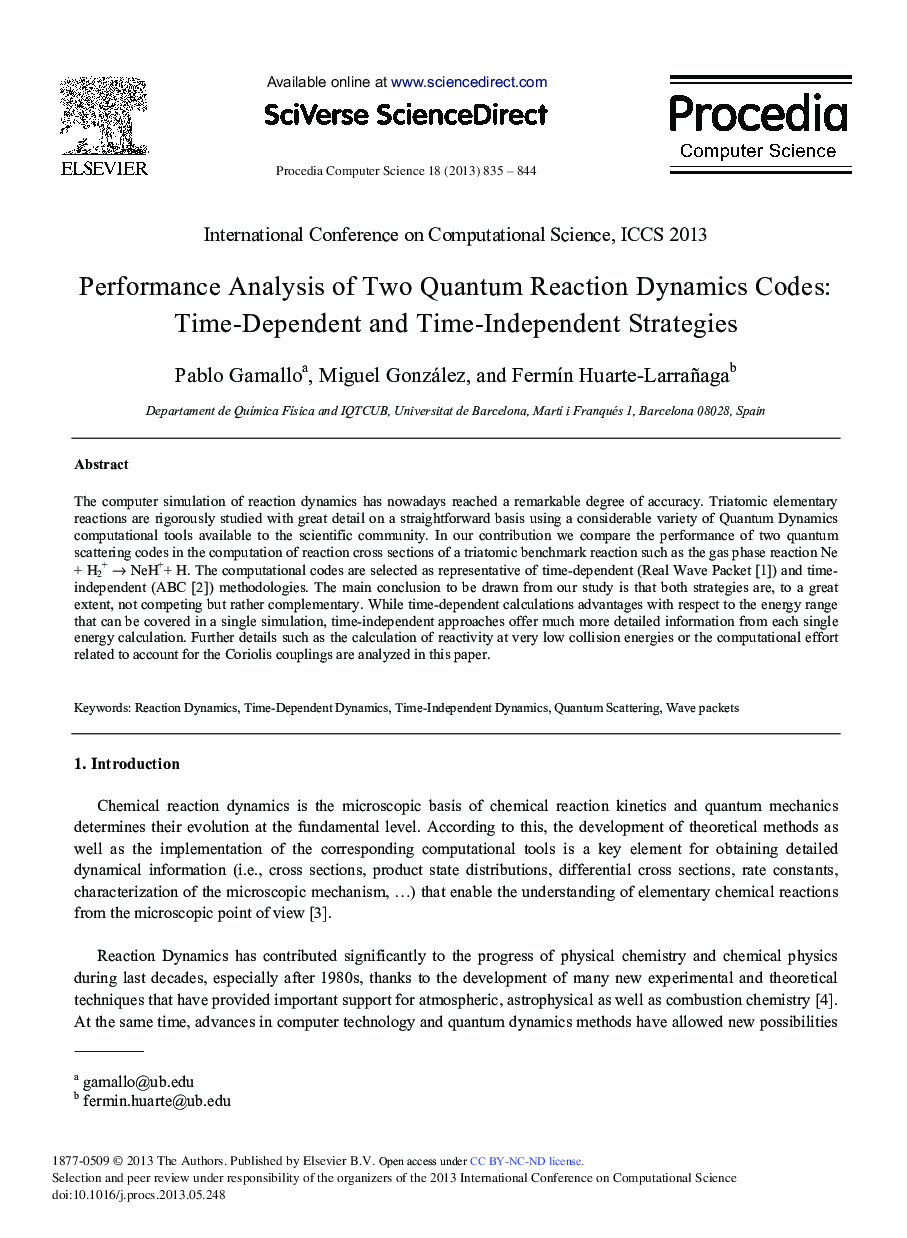| Article ID | Journal | Published Year | Pages | File Type |
|---|---|---|---|---|
| 490558 | Procedia Computer Science | 2013 | 10 Pages |
The computer simulation of reaction dynamics has nowadays reached a remarkable degree of accuracy. Triatomic elementary reactions are rigorously studied with great detail on a straightforward basis using a considerable variety of Quantum Dynamics computational tools available to the scientific community. In our contribution we compare the performance of two quantum scattering codes in the computation of reaction cross sections of a triatomic benchmark reaction such as the gas phase reaction Ne + H2+ → NeH++ H. The computational codes are selected as representative of time-dependent (Real Wave Packet [1], ) and time-independent (ABC [2]) methodologies. The main conclusion to be drawn from our study is that both strategies are, to a great extent, not competing but rather complementary. While time-dependent calculations advantages with respect to the energy range that can be covered in a single simulation, time-independent approaches offer much more detailed information from each single energy calculation. Further details such as the calculation of reactivity at very low collision energies or the computational effort related to account for the Coriolis couplings are analyzed in this paper.
